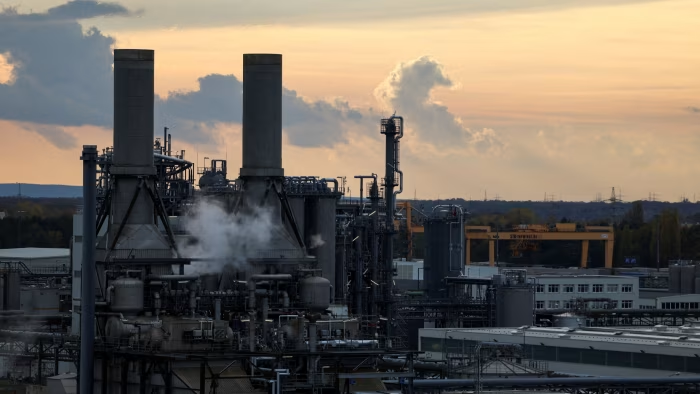Unlock the Editor’s Digest for free
Roula Khalaf, Editor of the FT, selects her favourite stories in this weekly newsletter.
Europe may well be sleepwalking into deindustrialisation, as Ineos chair Sir Jim Ratcliffe has indicated. But it is hard to see it changing direction. The UK chemicals group Ratcliffe runs — whose debt has been sold off by concerned investors — will not be the last to come under pressure.
The problem, for European commodities chemicals companies such as Ineos Group, its affiliate Ineos Quattro, BASF, Synesqo, Arkema, Evonik and Lanxess, is that producing in the continent is relatively expensive. Natural gas, which accounts for 85 per cent of the cost of manufacturing fertilisers and ammonia, cost Europeans about four times what it did in the US in the third quarter of this year, according to Oxford Economics. Strict environmental standards and carbon costs add to the burden.
That is a formula for disappointment. European companies’ share of the global chemicals market declined from 28 per cent in 2003 to 13 per cent in 2023, according to Barclays research, a trend that has continued since. Sector stocks have underperformed the Euro Stoxx 600 index by more than 30 per cent over the past two years.
The problem is bigger for petrochemicals and commodities chemicals makers, among them Ratcliffe’s companies and others such as Venator and Kem One. Speciality chemicals companies such as Synthomer, Arkema, ASK Chemicals and Seqens have the advantage of relatively less competition, though they are vulnerable to innovation by rivals.
Protectionism might seem like a solution, at least to the companies themselves. Ineos Group said it was filing EU anti-dumping cases against imports of cheap substitutes. As Europe’s fourth-largest industrial sector, chemicals underpin industries including defence, agriculture and pharmaceuticals. But trade curbs risk raising costs for consumers and inviting retaliation. A third of EU chemical sales is exports.
Smaller, leveraged companies have been the first to bear the brunt. Apollo-owned Kem One’s €450mn bond due in 2028 has fallen to 14 cents on the euro. Loans to Seqens have changed hands at roughly half their face value. Chemicals groups account for 5.4 per cent of the European leveraged loan market and are down 2.8 per cent year to date through October on Morningstar’s European Leveraged Loan Index.

That might understate what could be a much graver problem. Barclays analysts argue that, at worst, chemicals groups could find they have a “terminal value” — the sum of their long-term cash flows starting from a few years out — of zero, and should slash their indebtedness sooner rather than later. That leaves a lot of toxic waste to wade through.
gaia.freydefont@ft.com
